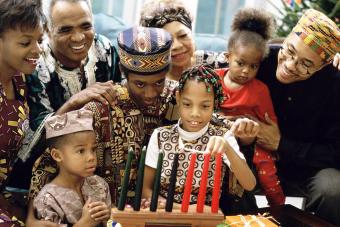
Many parents remember reading Dick and Jane books when they were first learning to read. While those books are still available, so are many others that teach a host of pre-reading and reading skills such as letter recognition, comprehension, story sequencing, phonics, and more.
Alphabet Books
Reading alphabet books with your children can help them develop the important pre-reading skill of letter recognition. Young children particularly enjoy alphabet books featuring vivid images and favorite characters, such as animals. One very popular animal alphabet book is Graeme Base's Animalia, which was awarded the 1987 Best Picture Story Book by the Young Australian's Best Book Awards.The book is beautifully illustrated, and helps children learn what letters look like, as well as how they sound.
Another great choice for introducing children to letters is Chicka Chicka Boom Boom. The classic rhyming book won the Parent's Choice Award in 1991, and is popular with kids who like the rhythm and rhyme as the book introduces each letter going up the coconut tree.
The Bob Books

The Bob Books for Beginning Readers have won numerous awards. This series of books offers a step-by-step system that allows children to build reading skills with simple, fun picture books.
Used for 35 years by millions of children, the Bob Books come in sets aimed to progressively develop reading skills. The first set helps children who know the alphabet begin to develop pre-reading skills. As children progress through the books and sets, they build on skills they've already learned. Later sets develop sight words, rhyming words, word families, and complex words. All the books in the series allow children to become successful in their early reading attempts very quickly, motivating young readers to keep learning.
Dr. Seuss Beginner Book Collection
A perennial favorite, Dr. Seuss' Beginner Book Collection uses fun rhymes, whimsical illustrations, and stories that have withstood the test of time. They help with word recognition, rhyming words, vowel discrimination and phonics. The books also help children develop reading comprehension skills. Included in the collection are:
- The Cat in the Hat
- One Fish, Two Fish, Red Fish, Blue Fish
- Green Eggs and Ham
- Hop on Pop
- Fox in Socks
The collection is available in stores and online.
Richard Scarry Books

Richard Scarry books help children with word recognition and word families. Scarry wrote more than 300 children's books, filled with bright illustration of adorable animals. Children find the illustrations inviting and enjoyable. His first bestseller was Richard Scarry's Best Word Book Ever, which has more than 1,400 labeled illustrations for children. Scarry also has several readers in varying levels ranging from kindergarten up. Some of Scarry's great early readers include:
Alexander and the Terrible, Horrible, No Good, Very Bad Day
This book, written by Judith Viorst, won the American Library Association Notable Book. The illustrations draw kids in, and the content is engaging. The book also has enough repetition to encourage children to read along. Skills taught include comprehension, cause and effect, and story sequencing.
Clifford the Big Red Dog
Norman Bridwell's beloved character invites children to participate in reading with gentle stories, vivid illustrations, and a well-known main character that has been adapted for television and the movies. TeachersFirst lists Clifford as one of the top books of all time for early readers ages four to eight. Skills include word recognition, comprehension, and cause and effect.
Some great Clifford books include:

If You Give a Mouse a Cookie
Along with having a charming story and illustrations, this book written by Laura Numeroff, teaches children logical sequencing in reading, as well as cause and effect. The book has won multiple awards, including the 1988 California Young Reader Medal.
Brown Bear, Brown Bear, What Do You See?
Brown Bear Brown Bear, What Do You See was written by Bill Martin and Eric Carle. It was named to the School Library Journal's Top 100 Picture Books of All Time. The book features lots of repetition and gently rhymes as well as engaging illustrations. All of these help young readers follow along with the book's narrative, encouraging them to find words they recognize. It also helps children associate illustrations with the storyline, which provides valuable reading cues.
Harold and the Purple Crayon
Crockett Johnson wrote the original Harold and the Purple Crayon book in 1955. Since it was published, several other books were added to the series. The book was included on the School Library Journal's Top 100 Children's Novels. The book has simple text and illustrations that encourages creative thinking, cause and effect, and reading comprehension. It also teaches children the concept of beginning, middle, and end.
Active Readers
Picture books that teach reading skills are fundamental building blocks that can create a foundation for active reading. Ideally, the child learns how to interact with the text, creating images that eventually make pictures in books unnecessary.







